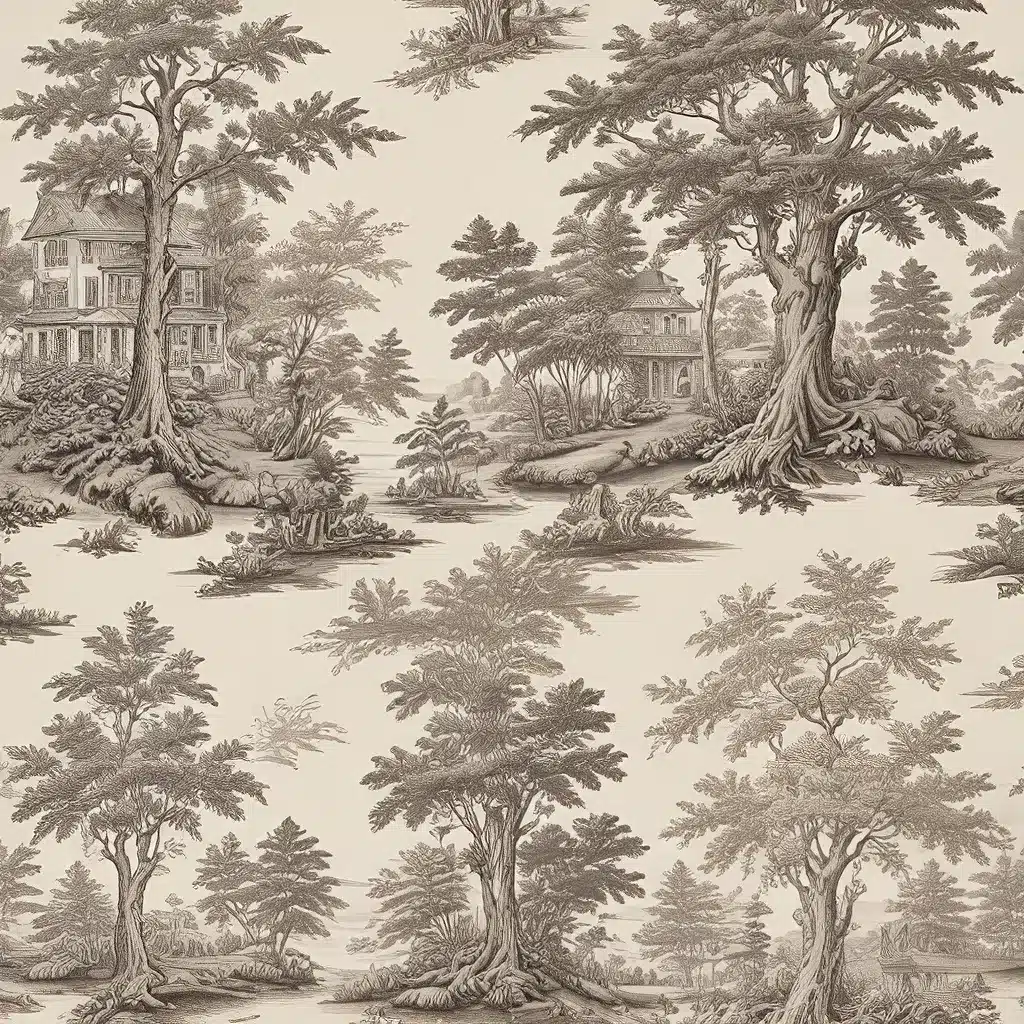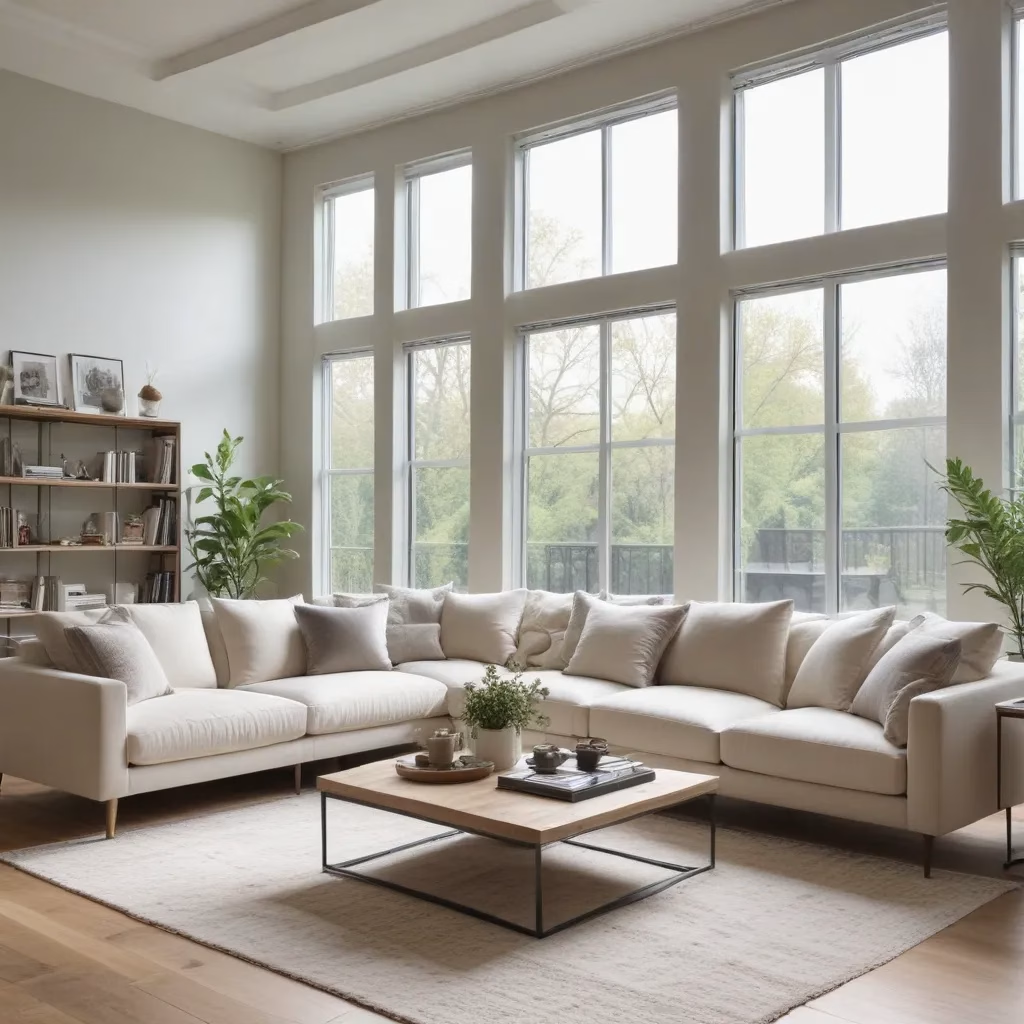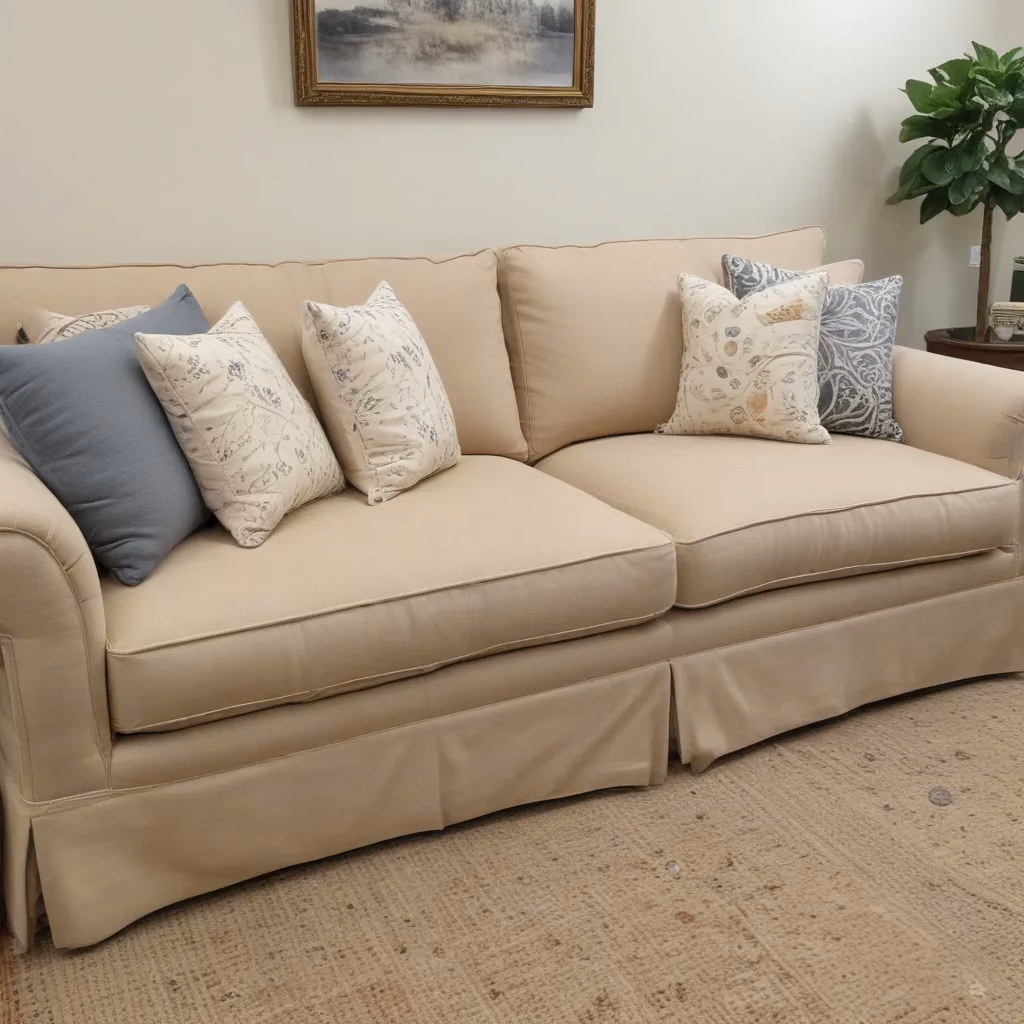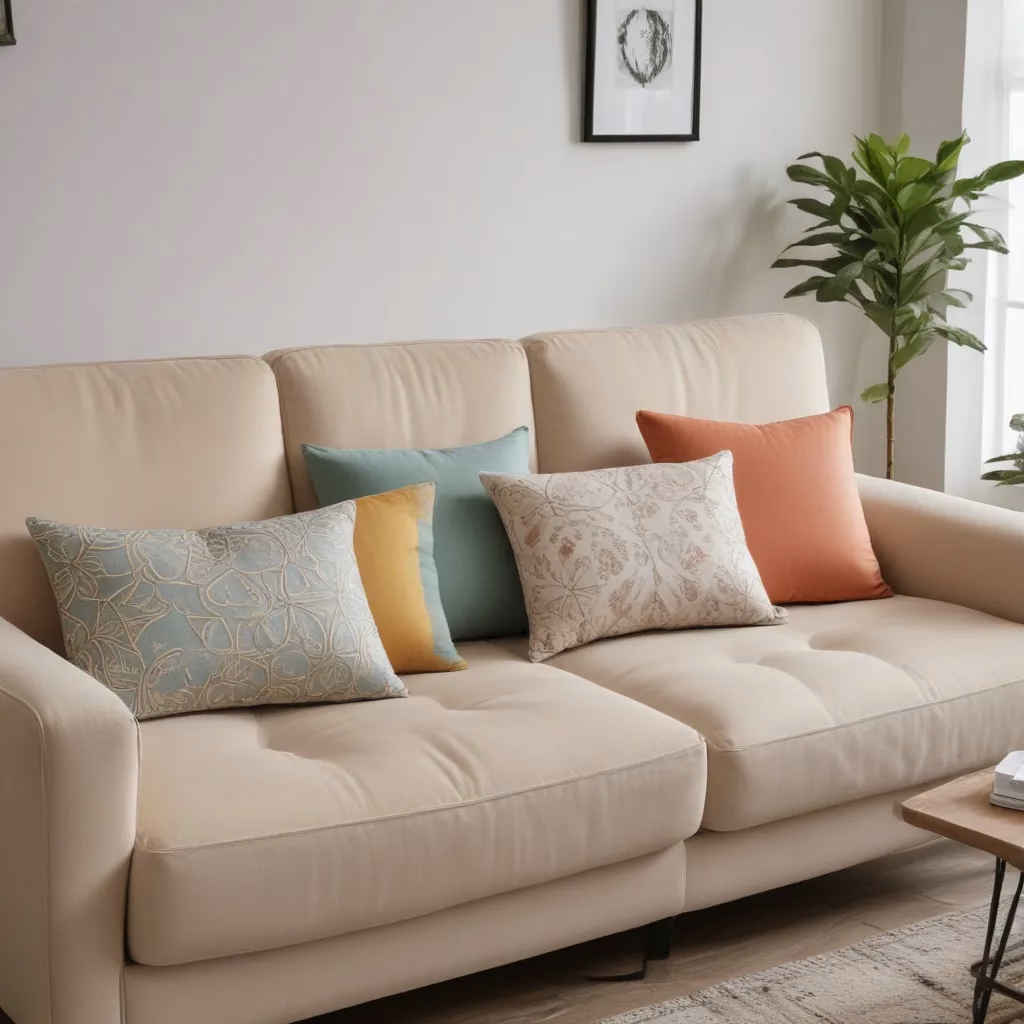
A Tale of Textiles and Traditions
As I sit here, gazing out at the rolling hills and winding streams that surround my family’s countryside cottage, I can’t help but be inspired by the rich tapestry of history that is woven into the very fabric of this land. The patterns that adorn my sofa, with their bucolic scenes and timeless elegance, seem to tell a story all their own – a tale of artistry, innovation, and a enduring love affair with the natural world.
You see, I’ve always had a bit of an obsession with toile de Jouy, that classic French scenic textile that has captivated the hearts of design enthusiasts for centuries. From its origins in 18th-century Jouy-en-Josas, to its modern-day resurgence as a symbol of pastoral charm, this captivating pattern has evolved and adapted, much like the landscapes it so beautifully depicts.
As I run my fingers along the soft, intricate designs of my Sofa Spectacular custom creation, I’m transported to a world of stately chateaus, lush gardens, and the gentle ebb and flow of French country life. It’s a world that has long captured the imagination of design aficionados and history buffs alike – a world that I’m eager to delve into.
The Birth of a Scenic Sensation
The story of toile de Jouy begins with a German entrepreneur named Christophe-Philippe Oberkampf, who in 1759 established a printed textile manufactory in the small French town of Jouy-en-Josas. Inspired by the lightweight, vibrantly-colored Indian cotton fabrics that were all the rage in Europe at the time, Oberkampf set out to create his own unique brand of printed textiles.
What set Oberkampf’s toiles apart was his mastery of the copperplate printing technique, which allowed for the creation of those iconic single-color pastoral scenes that would come to define the toile aesthetic. From bucolic landscapes dotted with grazing sheep to whimsical depictions of classic French literature, Oberkampf’s designs captivated the aristocracy and middle class alike.
In a stroke of strategic genius, Oberkampf also tapped into the prevailing cultural trends of the day, incorporating motifs inspired by the latest operas, novels, and even current events into his creations. This savvy marketing approach, combined with the unparalleled quality of his textiles, helped cement Oberkampf’s toiles as the must-have luxury item of 18th-century France.
The Rise and Reinvention of Toile
As the popularity of toile de Jouy skyrocketed, Oberkampf’s manufactory expanded rapidly, employing over 1,000 workers at its peak. His designs found their way onto the walls, windows, and furnishings of the most fashionable homes and chateaus, from the grand interiors of Versailles to the cozy country retreats of the French elite.
But Oberkampf was no one-trick pony. In addition to his iconic pastoral scenes, he produced a vast array of polychrome floral and geometric patterns, catering to a diverse range of tastes and budgets. His ability to adapt and innovate kept toile de Jouy at the forefront of French textile design for decades.
Even as the 19th century ushered in new design trends and technologies, toile de Jouy maintained its relevance. The pattern was embraced by a new generation of designers, who reinterpreted it to reflect the unique character of their local landscapes. From the Spanish moss-draped live oaks of Mobile, Alabama to the historic architecture of Nantucket, toile became a canvas for celebrating regional identity and preserving cultural heritage.
A Modern Toile Renaissance
Of course, no discussion of toile de Jouy’s enduring appeal would be complete without mentioning the visionary work of designers like Sheila Bridges and Richard Saja, who have breathed new life into this historic textile.
Bridges, the acclaimed AD100 designer, created her own Harlem Toile line in the early 2000s, which playfully subverted the traditional pastoral motifs with vignettes drawn from the African American experience. By weaving in elements of her own cultural heritage, Bridges not only celebrated the storytelling power of toile, but also challenged the homogeneity of the design world.
Similarly, artist Richard Saja has made a name for himself by “interfering” with the formal patterns of French toile, adding his own whimsical, subversive touches to the classic scenes. His vibrant, hand-embroidered creations have been met with critical acclaim, reminding us that the beauty of toile lies not just in its timeless elegance, but in its ability to evolve and inspire new perspectives.
Timeless Charm, Endless Possibilities
As I sink back into the sumptuous folds of my Sofa Spectacular creation, I can’t help but marvel at the rich tapestry of history and creativity that toile de Jouy represents. From the entrepreneurial vision of Christophe-Philippe Oberkampf to the bold, boundary-pushing designs of contemporary artists, this captivating textile has proven itself to be a enduring source of inspiration and delight.
Whether adorning the walls of a grand country estate or the cushions of a cozy city flat, toile de Jouy has the power to transport us to another time and place, to immerse us in the gentle rhythms of nature and the timeless traditions of French culture. And as the pattern continues to evolve and reinvent itself, I have no doubt that it will continue to captivate and delight design enthusiasts for generations to come.
So, the next time you sink into the plush embrace of your own toile-upholstered sofa, I invite you to let your imagination wander, to lose yourself in the verdant landscapes and whimsical vignettes that have enchanted hearts and homes for centuries. For in the endless possibilities of toile, we find not just a pattern, but a portal to a world of beauty, nostalgia, and unending creative potential.



